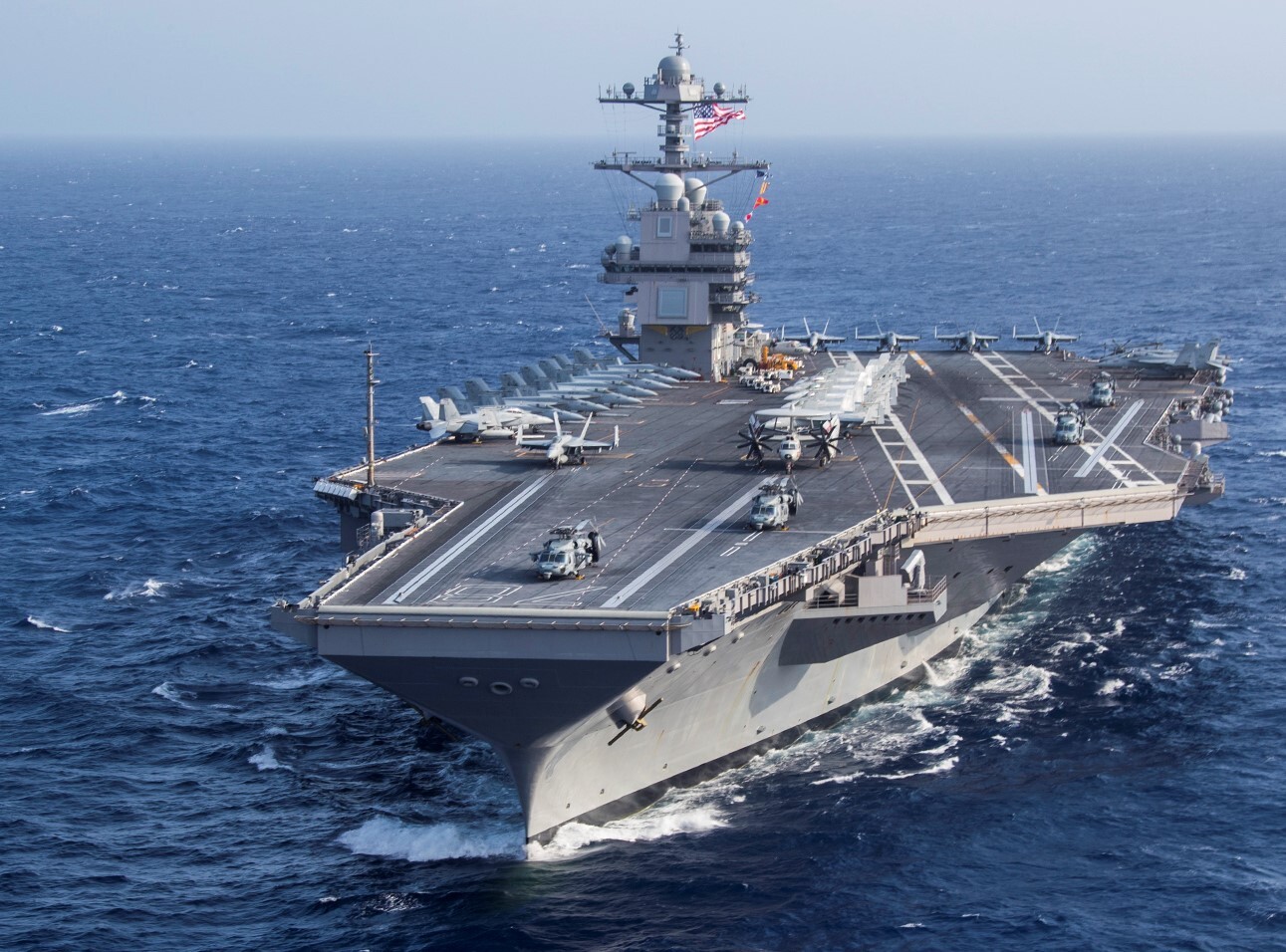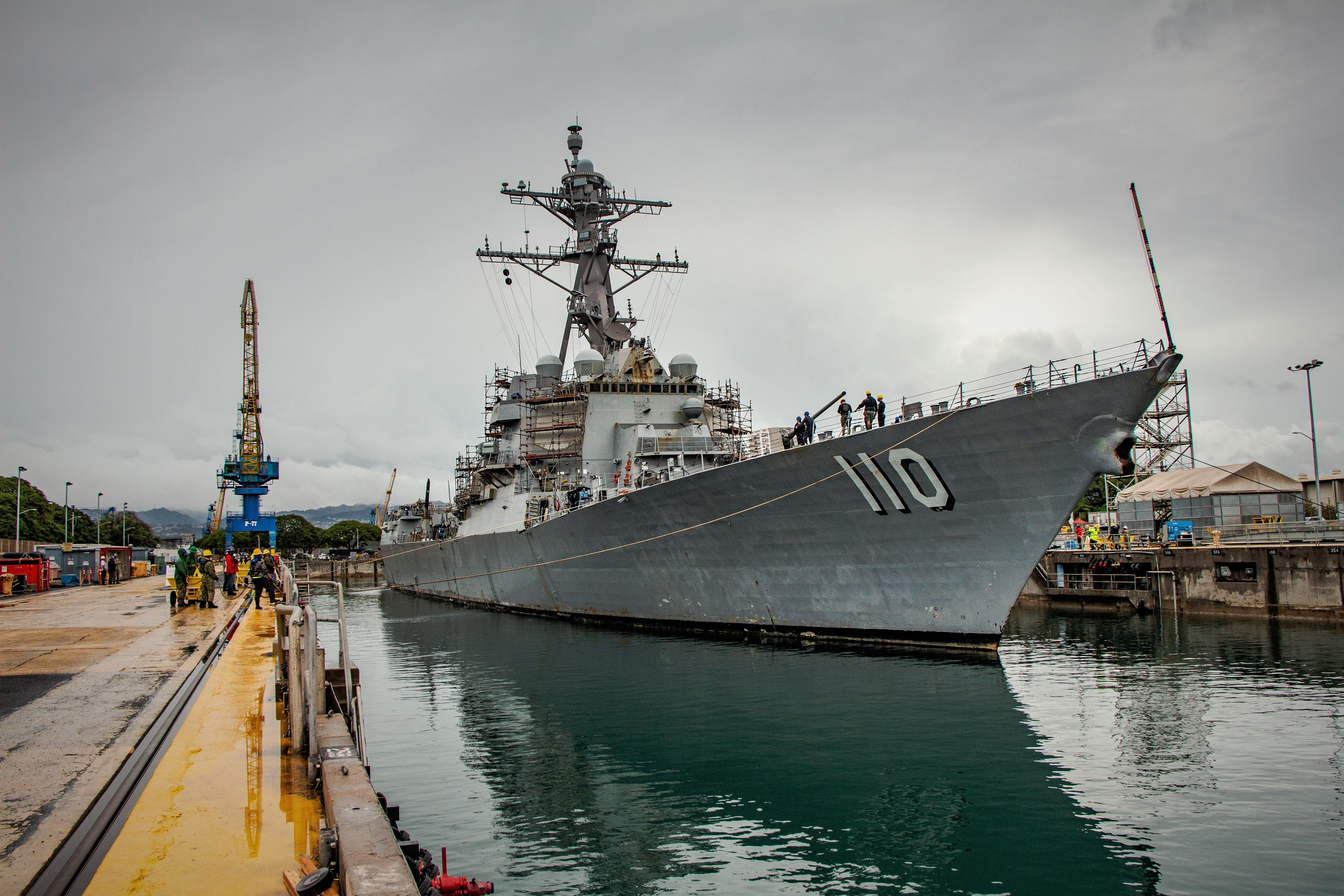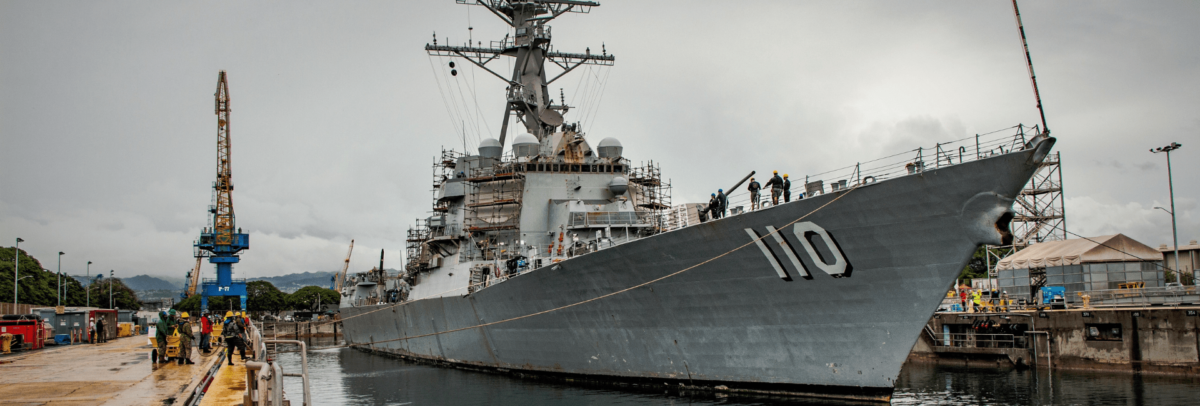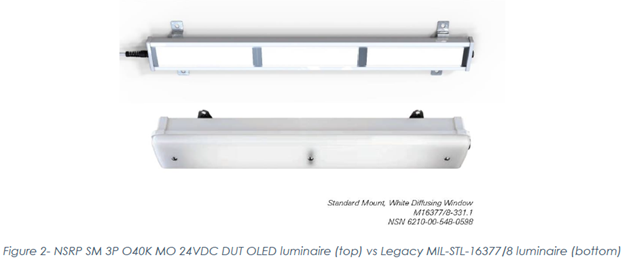
By Raymond Reyes, User Experience (UX) Consultant
Key Takeaways
- Thin OLED illumination panels allow for smaller and lighter fixture designs while maintaining survivability and durability. Prototype light fixtures using Brite 3 OLED panels are 75% smaller by volume and 50% lighter than legacy 120VAC Type 3 fluorescent/LED fixtures currently used on Navy ships.
- Low voltage DC OLED luminaires were observed to be easier and faster to install due to elimination of bonding and grounding requirements associated with AC fixtures, reducing installation costs and overall total cost of ownership.
- OLED lighting provides natural glare-free light while meeting most shipboard illumination requirements.
About the Project
OLEDWorks recently participated in a National Shipbuilding Research Program (NSRP) project demonstrating the use of low-voltage Organic LED (OLED) lighting in a shipboard setting. This was a follow-on to a previous project where Ingalls Shipbuilding successfully explored the overall feasibility of low-voltage DC solid state lighting (SSL) for shipboard use. In that project, OLED lighting technology in particular showed promise in reducing both size and weight of shipboard light fixtures. This led to a desire to perform an additional project to develop and install a prototype OLED light fixture in shipboard simulators to better determine the benefits.

USS Gerald R. Ford, Aircraft Carrier (Courtesy of NAVSEA)
Together with Acuity Brands, OLEDWorks assembled a prototype based on existing commercial-off-the-self (COTS) OLED technology, notably the OLEDWorks Brite 3 OLED lighting panel. Both Ingalls Shipbuilding and General Dynamics Bath Iron Works (BIW) shipyards evaluated and tested the fixtures in conditions simulating shipboard installation. The fixtures underwent a series of evaluations including physical fit and finish evaluation, shock and vibration testing, and luminance characterization tests.
OLED Lighting is Smaller and Lighter
As part of the conditions of the project, OLEDWorks and Acuity Brands designed and constructed a prototype OLED luminaire to use the existing mounting bolt pattern and dimensions found on Navy ships. This was done so a direct comparison against legacy fluorescent and inorganic LED light fixtures could be made. Despite this limitation, using OLED light panels reduced fixture volume by 75% and weight by 50%.
Even though the prototype fixtures are both lighter and smaller, they passed shipyard tests for vibration as well as the majority of shock tests without any major damage.
The OLED lighting panels themselves survived all the tests without any issues, demonstrating their robustness.
Removing design constraints around legacy mounting methods, OLED based fixtures could be designed to better fit narrow ship compartments and passageways than possible with older lighting technologies while improving survivability. The ability to use thin or bendable OLED light panels in fixtures that conform to bulkheads and overheads can result in more headroom or increased clearance in tight ship spaces, especially in berthing or other restrictive areas. OLED lighting panels are cool to the touch, making them more comfortable in close quarters and potentially reducing the amount of heat generated by lighting.
OLED Fixtures Generate Savings
OLED luminaires’ lighter weight and smaller footprint have advantages beyond fitting in tight spaces. The lighter weight of the fixture eases installation by shipyard workers and reduces material and handling requirements. Likewise, the smaller size also reduces storage requirements during construction or for spare units aboard ships, generating further savings.
Low-voltage DC wiring simplifies installation by removing bonding and grounding requirements. Furthermore, low voltage DC is safer to work with, allowing fixtures installation/replacement while supply lines are still energized using watertight twist lock connectors. This eliminates down time while maintaining worker safety.
Taken all together, it is estimated that OLED luminaires contribute a 15% cost savings over legacy 120VAC fixtures. Additionally, compared to existing 120VAC fixtures, low voltage DC OLED fixtures have the potential to save 9 tons of weight on a Navy destroyer in a one-to-one replacement scenario (including savings from wiring reductions).

USS William P. Lawrence, Arleigh Burke-Class Guided-Missile Destroyer (Courtesy of NAVSEA)
Better Light with OLED
OLED-based lighting produces a full-spectrum light that is easy on the eyes and is characterized by low-glare and even distribution. Full-spectrum, low-glare, and reduced shadowing contributes to overall ship’s company comfort and well-being. The benefits of OLED lighting are well-documented, including the sustainability of OLED lighting products.
In lab testing, a prototype six panel OLED light fixture fell just short of the candlepower requirements compared to a two-tube legacy fixture per MIL-DTL-16377/11 77.4 specifications. A 20% boost in panel output places the OLED fixture comfortably within the -10% / +20% acceptable range of the specification. It is expected with the rapid progression of OLED light technology, the required 20% boost is attainable within the next few years. In addition, the fixture far exceeded the requirements of a single tube legacy fixture per MIL-DTL-16377/8 331.1 specifications.
In a physical mock-up of typical shipboard spaces, the prototype fixtures were installed in a representation of typical shipboard space (office, workshop, berthing compartment) with and without furniture, providing approximately 31-32 average foot-candles of illumination depending on configuration and layout. This meets NAVSEA’s Habitability Specification which requires most general areas, such as offices, a minimum of 28 foot-candles of illumination at 30” above the deck.
Shipboard spaces may require saturated light such as red or amber. Color saturated OLED lighting panels provide the same low glare and even distribution as full spectrum panels. The amber color is even able to provide a low level of color rendering, something that is not normally attainable with color saturated light. Due to low voltage DC power, OLED fixtures can also easily be integrated into a single fixture together with full spectrum white OLED panels with simple switching or sensor-based controls to toggle between color options.
Conclusion
OLED-based lighting provides several advantages over legacy light technologies, fluorescent and LED for certain applications. Lower weight, thinner form factors, reduced wiring complexity, safety provides shipbuilders and designers with design advantages for tight spaces or weight constrained installations.




